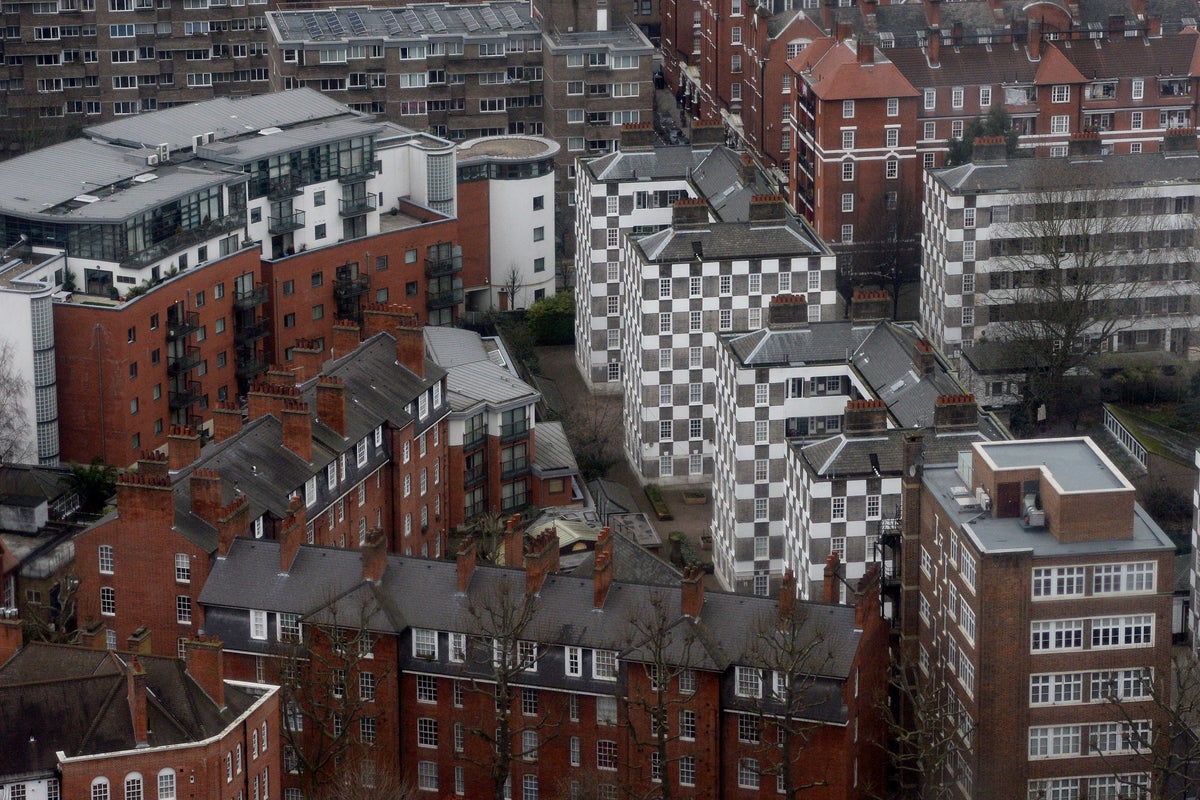
Mortgage lenders said they are ready to support customers, as the Bank of England base rate rose for the 13th time in a row, pushing up some borrowers’ costs by hundreds of pounds more per year.
Homeowners whose mortgages directly track the base rate will see their monthly payments jump by around £47 on average as a result of Thursday’s unexpectedly steep rate hike from 4.5% to 5%.
Trade association UK Finance said the average tracker mortgage payment will increase by £47.43 per month, adding up to £569.16 annually.
Taking all 13 base rate rises into account, the average monthly tracker mortgage payment will have increased by £464.79 – adding up to average tracker mortgage payment increases of £5,577.48 annually.
David Postings, chief executive of UK Finance, said: “Lenders are ready to support customers who are feeling the strain from the rising cost of living.
“Over 80% of homeowners are on fixed-rate deals and will be protected from any immediate rise in mortgage repayments following the bank rate increase.
Lenders are ready to support customers who are feeling the strain from the rising cost of living— David Postings, UK Finance
“Those customers who are due to come off their fixed rates later this year are, however, likely to face higher monthly repayments.
“Lenders are prepared to help anyone struggling with their mortgage payments.
“If you are worried about your finances, do get in touch with your lender early to discuss the options available.
“They have teams of experienced and understanding advisers who will develop a solution tailored to your individual circumstances. Making a call to your lender to discuss the options available will not impact your credit score.
“Importantly, the level of homeowners in arrears remains low, meaning that most households are able to keep up with their monthly payments.”
While fixed-rate mortgage borrowers will not see an immediate change in their monthly payments as a result of Thursday’s base rate hike, around 2.4 million fixed-rate deals are due to end between now and the end of 2024.
According to Moneyfactscompare.co.uk, the average two-year fixed residential mortgage rate on Thursday morning was 6.19%, while the average five-year fixed-rate mortgage was 5.82%.
In total, there are 8.5 million homeowner mortgages outstanding, according to UK Finance.
Around 639,000 of these are tracker mortgages and 773,000 are standard variable rate (SVR) mortgages.
Borrowers end up on an SVR when their initial deal ends. SVRs are set by lenders individually, although these loans often roughly follow movements in the base rate.
If lenders choose to pass on the latest base rate rise in full, this would add £30.28 to the average monthly SVR payment, adding up to an annual increase of £363.36.
An SVR mortgage holder who has had all 13 rate rises fully passed onto them faces paying £296.76 more per month in total, on average, adding up to a £3,561.12 annual payment increase.
Consumers looking to remortgage may find it difficult to afford higher interest rates, so seeking independent advice is essential— Rachel Springall, Moneyfactscompare.co.uk
Rachel Springall, a finance expert at Moneyfactscompare.co.uk, said: “Amid a cost-of-living crisis, rising interest rates can have a devastating impact on borrowers who are already struggling to cover their monthly essentials and could well lead to a rise of ‘mortgage prisoners’.
“Those borrowers who are still on a competitive fixed-rate deal for a few more years may want to consider overpaying their mortgage to reduce the size of their loan.”
She continued: “Affordability remains a key concern for any borrower, some first-time buyers may put their plans to jump onto the property ladder on hold in hopes the housing supply shortage will improve and interest rate volatility calms.
“It is imperative new buyers can comfortably build a large enough deposit and meet their mortgage repayments, which may be challenging to meet if they have limited disposable income.
“Consumers looking to remortgage may find it difficult to afford higher interest rates, so seeking independent advice is essential to consider every option available to them, such as downsizing.”
Speaking at a press conference in July last year, Sir Jon Cunliffe, the Bank of England’s deputy governor, financial stability, said: “I think I’d say the proportion of households who could get into real stress on their repayments, it’s normally when repayments are about 40% of your income, is a number we always watch very carefully and we always look to see what interest rate increases will be needed to take that share back to historically high levels, levels we’ve seen in the past, 2.7% was the highest we saw before the financial crisis.”
He said back in 2022: “Of course, there’s great uncertainty about what will happen… but as it stands now, on the basis of the Monetary Policy Committee’s forecasts on market interest rates, we don’t see that share rising that much this year. We see it rising further next year. That’s about debt distress…”
Asked what level the bank rate would have to reach for debt servicing ratios or mortgage debt to return to pre-financial crisis levels, he said previously: “I think the market’s got interest rates going to nigh-on 3%, you’d be looking at five to seven to eight on the corporate side.
“The picture is not that dissimilar on the mortgage market side because again, you’ve got mortgage market, consumer debt and you have got this question of how it comes through over time.”







